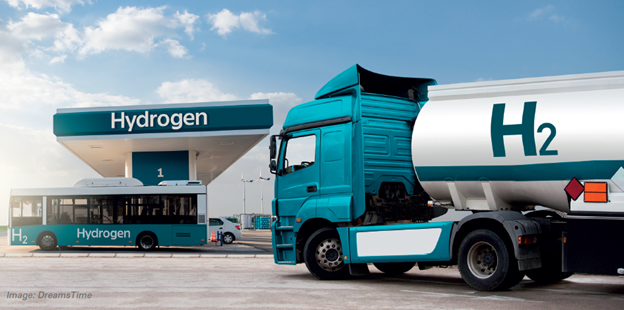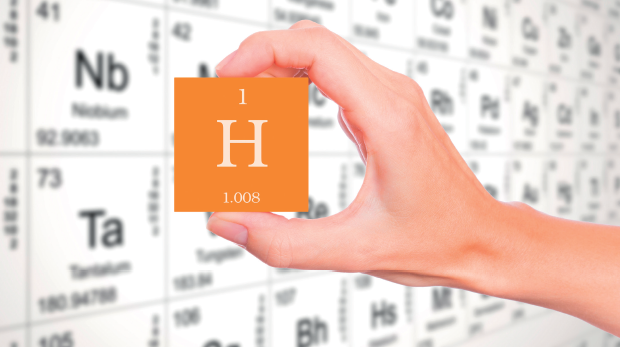The Valve World show held in Dusseldorf, Germany, (December 2024) was a top draw for those involved in the deployment of hydrogen in the energy transition. This article sums up some of the key findings of several conference presentations addressing this smallest of molecules.
By KCI Editorial.
Fugitive Emissions Testing
Valve tightness is of course both an environmental and a safety concern for systems containing hydrogen, explained Cetim’s Mr. Sauger by way of introduction. He continued by stating that existing tightness tests and designs based on helium or methane may not be conservative for hydrogen process fluid. At the same time, many existing installations and equipment in gas transmission systems dedicated to natural gas may move to hydrogen and/or hydrogen and methane blends with an impact identified on seals. This means there is a need for validation of sealing performance for new or repurposed installations at material/system & equipment levels.
His presentation then continued with several sections which discussed the following: the development of a fugitive emissions test installation with hydrogen; a fugitive emissions procedure for valve testing; test results on a ball valve; stem seal testing on a hydrogen test bench.
He further explained that the test installation used a 4”class 600 ball valve with an Atex IIC actuator. Giving specifics, he noted that the stem seal comprised elastomer O-rings (FKM), there was an internal metal seal, and the flanges were fitted with graphite spiral wound gaskets. Finally, leak rates were measured using the vacuum test method.
Jumping to some of the conclusions, Mr. Sauger noted that Cetim has developed a safety approach to performing hydrogen tests, with facilities to measure fugitive emissions of hydrogen at high and sub-zero temperatures.

Further, following a test program carried out with FKM and HNBR seals (following ISO DIS 12101), low interfacial leakage was seen at –20°C. However, hydrogen permeation through elastomers could be observed at 60°C.
Polymeric Materials
Hydrogen effects on polymeric materials: permeation, rapid gas decompression and ageing tests was the title of a presentation delivered by Ms. Simona Macchi from Effeciemme Componenti. The need to conduct research into this area was clear from one of Ms. Macchi’s first slides: as hydrogen is highly combustible, materials need to be selected that are not affected by gas permeation and leakage.
She further outlined that tests had been performed with 100 per cent hydrogen, such as permeation in accordance with ASTM D1434/ISO 2782-1, rapid gas decompression in accordance with API 17J/ ISO 13628-2, and ageing in accordance with Effeciemme Standard (includes soaking in hydrogen for 36 days).
Her presentation went into quite some depth. Hence the term permeation was characterised as the product of two additional factors, namely diffusion (reflects the penetrant mobility in the polymer) and solubility (reflects the affinity of the gas for the polymer).
Further, permeation depends on factors such as temperature, pressure, the molecule size and interaction, the thickness and surface area of the polymer and also the polymer type and filler.
Jumping to some of the findings, Ms. Macchi noted that following permeation tests, rapid gas decompression tests and also ageing tests, no issues were observed with PTFE and PEEK-based materials.
Giving an insight into possible future areas of research, she indicated a next step could include ageing tests in accordance with NORSOK M710 (ISO 23936-1).
Plug Valve Sealant Compatibility
Findings from another research project were delivered by Mr. Ochuko Ifie (Flowserve), who discussed how sealant used in lubricated plug valves had been evaluated for compatibility in hydrogen gas service. Giving due acknowledgement, Mr. Ifie noted that the research journey had taken six months, in collaboration with Fraunhofer.
Discussing the need to validate compatibility, he drew attention to API 6D Annex M, which states that ‘lubricated plug valves shall be furnished with sealant/ lubricant validated for the rated design temperature range of the valve in hydrogen service’ and ‘the sealant/lubricant shall be capable of maintaining viscosity for tight sealing and lubricity for ease of operation in hydrogen service’.
Commenting that the hydrogen economy and resulting standards are driving valve qualification requirements, he observed that Flowserve’s lubricated plug valves have been used in hydrogen gas service for decades, such as in recovery lines in catalytic processes.
Methods used during this specific project included rheological investigation, thermogravimetry analysis and differential scanning calorimetry. Test conditions were set to approximate typical hydrogen gas pipeline applications for lubricated plug valves. Three different Flowserve sealants were evaluated.
Summing up, Mr. Ifie indicated that the impacts of hydrogen gas were not significant enough to influence performance and that sealant stability was maintained after the exposure. In short, ‘The test process effectively qualified Flowserve sealants in hydrogen gas service’.
Hydrogen Aircraft
Cryogenic high-performance valves for hydrogen aircraft was the topic discussed by Mr. Nozomi Matsumura from KITZ. By way of background, he pointed to Japan’s Declaration of Carbon Neutrality by 2050 and a NEDO project (New Energy and Industrial Technology Development Organization) for aircraft development.

Specifically, KITZ is looking to develop check valves, back-pressure regulating valves, and shut-off valves (ball valve with electric actuators). They are intended for use with liquid hydrogen and low-temperature hydrogen gas (approx. –253°C). As to requirements, he indicated that valves for hydrogen aircraft have to be high performance, compact, lightweight and reliable.
Providing more details, he indicated that the check valves would have an inline structure and be capable of working at even very low pressure. Meanwhile, the shut-off valves would require a compact structure without an extension bonnet, yet still be suitable for extremely low-temperature conditions.
Looking in detail at the check valve, KITZ are considering the use of ultrathin walls to achieve weight savings. Discussing the prevailing status, Mr. Matsumura indicated that following evaluation of the functional prototype, KITZ had moved on to the design, manufacturer and evaluation stage, with the goal of installing the system in actual aircraft.
API Spec 6D, Annex M
Jonathan Geleijns came to the Valve World Conference wearing two hats. First, he is Energy Transition Technologies Manager—SLB. In addition, he is co-chairman API spec 6D, Annex M. And it was in this second capacity that he delivered a presentation outlining API’s efforts as regards valves for hydrogen service.
He started by reviewing key concerns for hydrogen gas. These include: hydrogen-related material damage, effects on soft materials, sealability, and fire and explosion hazards.
Moving to the API task group, he said that the 172 members included end users, valve manufacturers, seal manufacturers and test centers from eleven countries.
Quickly going through the main requirements, these include issues such as: specification levels for hydrogen, design validation tests, materials requirements, supplemental acceptance testing, non-destructive examination, quality control, marking, and documentation.
Looking at the main requirements for metallic materials, Mr. Geleijns discussed topics such as: NACE MR0175/ISO 15156 compliance, permitted materials, materials requiring additional testing, springs, welding and cladding, bolting, etc.
Deep Cryogenic Testing
‘Getting ready for liquid hydrogen – a vision on deep cryogenic testing’ was the topic addressed by Ventil’s Emiel Lechevallier. Looking at the ‘why’, Mr. Lechevallier indicated that liquid hydrogen has a higher energy density per volume compared to gaseous hydrogen. Hence it could be a very useful energy carrier.
However, there is a ‘cryo conundrum’, he continued. Factors include: the large temperature drop to transition from cryogenic hydrogen at –196°C and liquid hydrogen at –253°C; the effects of material crimp and tolerances; the fact that the physical properties of the fluid will change, resulting in leakages, not emissions.
Ventil is therefore researching the optimum way to test valves intended for liquid hydrogen service. Under development is a system using closed cycle cooling based on helium, with the benefit of only consuming electric energy. This approach, indicated Mr. Lechevallier, would facilitate cycle and reliability testing over longer periods of time, without disproportional costs.


